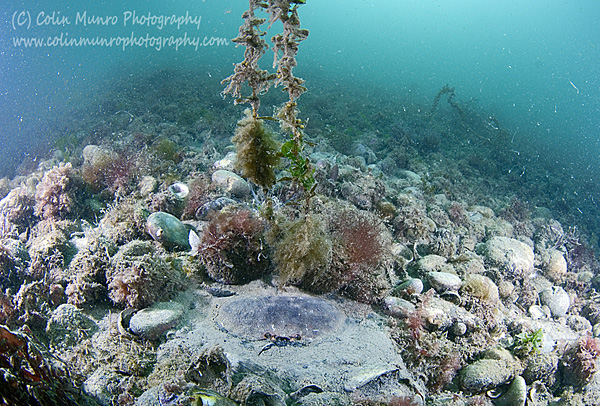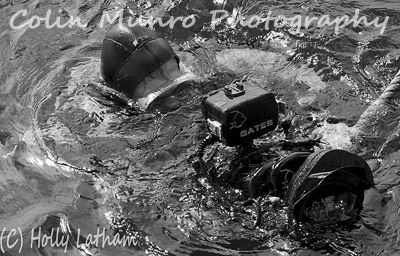All the images in this blog are available to license. To view a gallery (license images or purchase prints of) these, and more of my North east Atlantic marine invertebrate images go here. Alternatively you can search all my online stock images at my www.colinmunro.photoshelter.com site through the search box (top right) here or on my main website here. Edible crab images, Cancer pagurus images, stock images.
Edible crabs
The pie-crust edged shell of the European edible crab, Cancer pagurus, is one of the most familiar sights in fishmongers windows and supermarket fish counters. Known by British fishermen as the brown crab, due to the deep reddish-brown colouration of its shell. This is the crab we normally eat as ‘dressed crab’, with the crab meat served arranged in the open crab shell. Juvenile edible crabs are often found under boulders by children rock pooling on the shore, their reddish-brown colour and much more chunky claws (chelipeds) easily distinuishing them from the more common shore crab (Carcinus maenus).
Adults generally live further offshore, down to about 200 metres depth. Away from rocky areas edible crabs tend to bury themselves in ther sediment. They’re pretty well camouflaged when they do this, one has to look pretty hard to make out the outline of their shell or see the two beady little eyes watching to see if you’ve spotted them.

An edible crab, Cancer pagurus, lying hidden in a shallow depression it has dug in the sediment. Image No. MBI001178
Edible crabs are prodigious excavators of sandy or muddy seabeds. During the course of a dive one can often observe numerous large shallow ‘craters’ created by edible crabs.

An edible crab, Cancer pagurus, digs in to algae covered sediment to create a depression in which to hide. Image No. MBI001171
Migrations
Within the English Channel edible crabs undertake interesting migrations. Females tend to move west or southwest; they can travel 2-3 kilometers a day, with some travelling up to 200 miles. They larvae, which are planktonic for 60-90 days, tend to drift east, thus restocking the areas from which the adults migrated (Pawson, 1995). Mating occurs in spring, shortly after the females have moulted, but the sperm is stored by the females and eggs are fertilised once they move offshore the following winter.
Lifespan and minimum landing sizes
Edible crabs generally live for 25-30 years. There are various reports of them living up to 100 years but it’s hard to assess how reliable these reports are. The minum landing size various regionally in UK waters between 130 and 140mm across the carapace. In Devon, Cornwall and the Scilly Isles this is increased (for male crabs only) to 160mm.
Fun facts
The largest edible crab ever caught in British waters is believed to be one landed, not by a commercial fisherman, but by an amatuer diver. Paul Worsley landed a 17lb crab with a 12 inch wide shell in July 2008. This monster was caught on the wreck of the Empress of India, a British battleship dating from the 1890s that lies in deep water in Lyme Bay, Southwest England.

An edible crab, Cancer pagurus, raises its large heavy claws (chelipeds) adopting a defensive posture. Image No. MBI001249
All images copyright Colin Munro
www.colinmunrophotography.com
www.colinmunro.photoshelter.com
All the images in this blog are available to license. To view a gallery (license images or purchase prints of) these, and more of my North east Atlantic marine invertebrate images go here. Alternatively you can search all my online stock images at my www.colinmunro.photoshelter.com site through the search box (top right) here or on my main website here.
References
Pawson, M., G. 1995. Biogeographical identification of English Channel fish and shellfish stocks. Fisheries Research Technical Report (number 99), MAFF Direct Fisheries Research Lowestoft, England. Available from: http://www.cefas.co.uk/Publications/techrep/tech99.pdf


